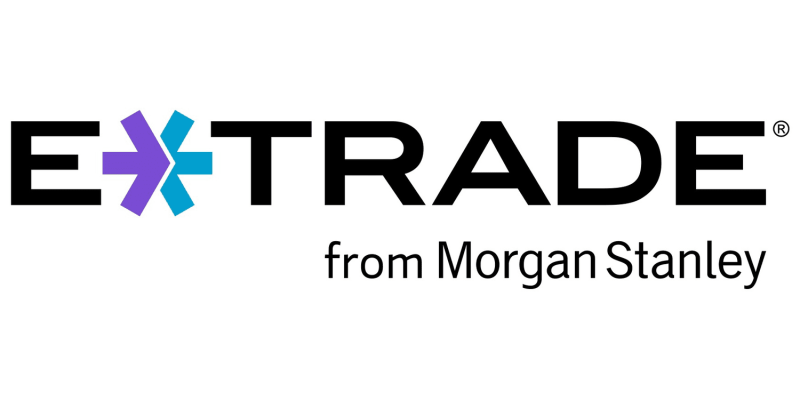Contents
- 1 Best Stock Trading Apps for Android
- 1.1 Best Overall : E*TRADE
- 1.2 Why We Chose It
- 1.3 Overview
- 1.4 Runner-Up : Charles Schwab
- 1.5 Why We Chose It
- 1.6 Overview
- 1.7 Best Free App : Webull
- 1.8 Why We Chose It
- 1.9 Overview
- 1.10 Best for Beginners : SoFi
- 1.11 Why We Chose It
- 1.12 Overview
- 1.13 Best for Experts : thinkorswim® by TD Ameritrade
- 1.14 Why We Chose It
- 1.15 Overview
- 2 Final Verdict
- 3 Compare Apps
- 4 How Do I Use a Stock Trading App for Android?
- 5 Android vs. Apple Stock Trading Apps
- 6 How Should I Choose an Android App?
- 7 Pros & Cons of Stock Trading Apps
- 8 How We Chose the Best Stock Trading Apps for Android
Trade stocks, execute options strategies, and manage banking from your Android.
We independently evaluate all recommended products and services. If you click on links we provide, we may receive compensation. Learn more.
Most financial services companies, big or small, have mobile apps available for their customers. Many people today prefer using their phone for instant access to their banking and investment accounts. The financial industry has responded to that demand. Android phones have become more popular around the world, despite Apple having a 57% share of the market in the United States. Even with Apple’s edge in the U.S., there are still millions of customers using Androids to manage their portfolios. We’ll look at the best trading apps available for Android phones to help you choose the stock trading app that’s best for your needs.
Best Stock Trading Apps for Android
- Best Overall: E*TRADE
- Runner-Up: Charles Schwab
- Best Free App: Webull
- Best for Beginners: SoFi
- Best for Experts: thinkorswim® by TD Ameritrade
Investing in cryptocurrencies, Decentralized Finance (DeFi), and other Initial Coin Offerings (ICOs) is highly risky and speculative, and the markets can be extremely volatile. Consult with a qualified professional before making any financial decisions. This article is not a recommendation by The Balance or the writer to invest in cryptocurrencies nor can the accuracy or timeliness of the information be guaranteed.
Best Stock Trading Apps for Android View All Best Stock Trading Apps for Android
- Our Top Picks
- E*TRADE
- Charles Schwab
- Webull
- SoFi
- thinkorswim® by TD Ameritrade
- See More (2)
- Final Verdict
- Compare Apps
- How Do I Use a Stock Trading App for Android?
- Android vs. Apple Stock Trading Apps
- How Should I Choose an Android App?
- Pros & Cons of Stock Trading Apps
- How We Chose the Best Stock Trading Apps for Android
Best Overall : E*TRADE
- App name: E*TRADE & Power E*TRADE
- Account minimum: $0
- Fees: No stock or ETF trading fee
- Tradable assets: Stocks, ETFs, mutual funds, options, fixed income, futures
Why We Chose It
We give the nod for the best overall Android mobile app to E*TRADE. E*TRADE has two mobile apps, E*TRADE and Power E*TRADE. Choosing between E*TRADE’s Android apps is easy. While both apps allow you some level of customization, the E*TRADE app is aimed at casual investors trading stocks, bonds and ETFs. Both apps are well-designed, support a wide range of trading options, and are backed by helpful customer support.
Pros
-
Commission-free trading of stocks and ETFs
-
Excellent educational content
-
No account minimums for regular brokerage accounts
-
Power E*TRADE app offers advanced features for sophisticated traders
-
Strong customer support
Cons
-
Commissions on over-the-counter (OTC) stocks, OTCBB, gray market, and OTC-traded foreign securities
-
Fractional shares are only available through robo-investing or a formal dividend reinvestment
-
No access to international exchanges
Overview
E*TRADE is an established online broker that offers commission-free stock and exchange-traded fund (ETF) trading. In addition to a wide range of financial product offerings, including common and preferred stocks, ETFs, futures, mutual funds, options, and fixed income, E*TRADE also provides banking products to its customers. E*TRADE was a pioneering online brokerage, and they continue to be by providing their customers with excellent tools for account management and monitoring. Instead of putting more complex trading and analysis tools on a single mobile app that everyone uses, E*TRADE separates these functions into two distinct apps. E*TRADE Mobile is the more basic app, while Power E*TRADE mobile is a more powerful trading platform with additional functionality.
Power E*TRADE mobile includes better charting with more technical analysis, the ability to enter up to four-legged option orders, and the ability to enter conditional orders. Both mobile apps, like their desktop workstation with the same names, allow traders to see streaming quotes, news, earnings, dividends, and gains and losses on the app.
The E*TRADE mobile app also offers third-party research, market news from Bloomberg TV, and access to stock and ETF screeners on the mobile app. Both of E*TRADE’s mobile platforms are highly customizable. E*TRADE also has a large library of educational offerings and corresponding support for traders, allowing investors to expand their knowledge and use more of E*TRADE’s capabilities over time.
Runner-Up : Charles Schwab
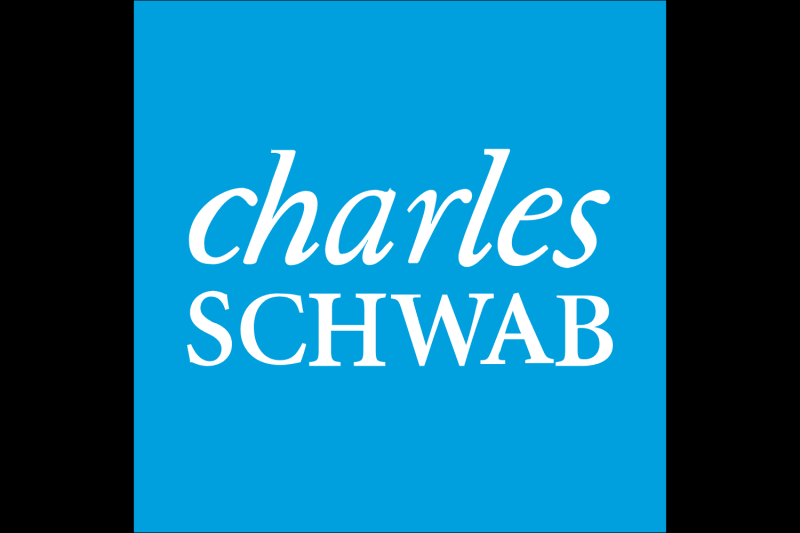
- App name: Schwab Mobile
- Account minimum: $0
- Fees: No stock or ETF trading fee
- Tradable assets: Stocks, ETFs, mutual funds, options, fixed income, futures
Why We Chose It
Charles Schwab is our runner-up pick for best overall mobile app. Schwab’s mobile app is an easy-to-use, intuitive app that meets the needs of most investors.
Pros
-
Low account fees and trading commissions
-
Easy to check balances and monitor portfolios, trades, and orders
-
Provides access to news, research, charting, quotes, and corporate fundamentals
Cons
-
Lacking in order routing controls and advanced options analysis tools
-
High fees for mutual funds outside of Schwab’s no-transaction-fee (NTF) program
-
Limited charting capabilities
Overview
As a online brokerage space leader serving a large client base of investors from new traders to the very sophisticated, Charles Schwab developed a mobile app that meets the needs of most people. The login process includes two-factor and biometric security options, and brings the user to a homepage that shows account balances. Users have an intuitive interface to navigate to different features, such as a current market overview, your portfolio, news, research, charting, and fundamental information.
Traders can easily place and monitor orders, and there are multiple order types available as well as the ability to trade four-leg options strategies in addition to ETFs, fixed income, and mutual funds. Schwab’s mobile app does not offer many choices for conditional orders, and their charting in the app could be stronger.
Overall, the app works well and is backed by Schwab’s strong customer service and deep educational offerings. Schwab’s mobile app will meet the needs of most investors, but expert traders will want to control how their order is routed and stronger options analysis tools. That said, the ease-of-use and the ability to offer so much to so many different types of users in a consolidated app gives Schwab an edge as a leader in online and mobile applications for everyday investors.
Best Free App : Webull

- App name: Webull
- Account minimum: $0
- Fees: No commissions
- Tradable assets: Stocks, ETFs, options
Why We Chose It
Webull is a very cost-effective choice for those who want to trade stocks, ETFs, options, or cryptocurrencies. Webull’s mobile app has a sleek modern feel that is easy to navigate. Webull’s app and desktop interface are near mirror images and even offer some customization options.
Pros
-
No minimum investment amount
-
Modern and easy to use
-
Complex four-leg options strategies, conditional orders, and different contingent orders available
-
Factional share trading available
-
No commissions for stock, ETF, options, and currency trading
Cons
-
Payment for order flow, which can negatively impact price execution for customers, is a key way Webull makes revenue
-
No interest on cash balances
-
Limited educational content for beginning traders
-
No access to fixed income, mutual funds, international equities, futures, or foreign exchange
Overview
Webull doesn't try to be everything to everyone. Instead, the company focuses its efforts on stocks, ETFs, options, and cryptocurrencies, and uses a business model that results in no commissions or fees on accounts. To do this, Webull utilizes a revenue model that relies heavily on payment for order flow. With fewer products available to customers, limited educational resources, and help available, Webull traders are expected to be self-sufficient in placing orders and managing positions. Those looking to build an equity portfolio on WeBull must do so on their own since there are limited tools provided for portfolio analysis.
Webull’s Android mobile app is nearly identical to the desktop version, with some changes related to the small screen size for the mobile app. On the app, customers can create their own customizable quote boards and get technical and fundamental data for an individual company quickly.
The positive side of Webull’s tightly focused platform is the ability to create web and mobile apps that have a clean look and are easy to navigate and use. Webull’s app only deals with trading and monitoring holdings across a limited set of assets, so it doesn’t need to stuff a lot of extras into the app to do this well. While execution on trades may be worse because of the reliance on payment for order flow, Webull customers still have access to most of what they typically trade (stocks, ETFs and options) at essentially no cost.
Webull does not pay account holders interest on their cash balances. This has not been very noticeable because rates have been so low, but the U.S. interest rate curve moving higher may make this a bigger issue for investors to consider in the future. Overall, however, Webull customers get a lot for almost nothing in direct costs.
Best for Beginners : SoFi
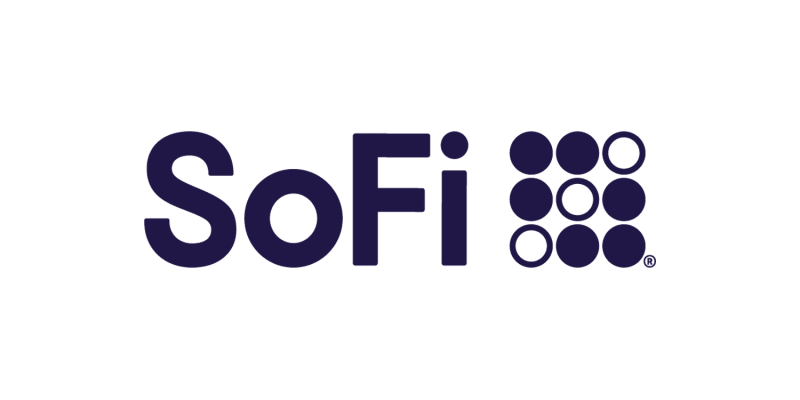
- App name: SoFi
- Account minimum: $0
- Fees: No commission for stock or ETF trades
- Tradable assets: Stocks, ETFs, cryptocurrencies
Why We Chose It
The SoFi Android app holds a variety of banking functions, including loans, no-fee cash management, and debit and credit cards in a single place. The features within the automated or active investing sections of the app are far from robust, but SoFi has designed it so that it gives new investors what they need for the most part. The app design, the price point, and the available assets in active investing are all tailored for younger investors. The app itself also becomes more useful as you run more of your finances through SoFi’s available products.
Pros
-
Inexperienced investors will find help with cash management, goal-based savings, financial planning, and even career coaching
-
Access to certified investment planners
-
No account fees or commissions
-
No account required to see potential portfolios, and no investment minimum
-
External account syncing available
Cons
-
Limited range of offerings, even for active accounts
-
No tax-loss harvesting
-
Lack of trading tools, screeners, and charting options
Overview
SoFi 's business model caters to newer investors and focuses largely on the automated digital investment management side as opposed to active investing. The company also offers personal loans, student refinancing, auto and mortgage financing, cash management and debit and credit cards, as well as insurance, so the platform and the app acts as a one-stop shop for someone who doesn’t want multiple accounts across multiple platforms.
SoFi Active Investing’s range of offerings is small, as stocks, ETFs, and cryptocurrencies are the only tradable assets on the platform. This means no fixed-income or mutual funds or more complex investments like options and futures. Even with the assets SoFi offers, the tools are limited. There is no stock screener, and you won’t find technical overlays in the charting.
The platform is much different from other Android-based online brokers covered here because of its passive investment focus. While the other brokers listed in this article also offer robo-advising accounts, it is not their primary focus the way it is at SoFi.
SoFi is a viable choice for someone who wants to consolidate their financial life, but the platform has its limitations in the products and tools available. Inexperienced, passive investors will likely be fine with SoFi for a long time, especially given the attractive price point and financial planning support. More active investors may outgrow both the assets offered and the tools for trading as their knowledge of the markets and investing increases.
Best for Experts : thinkorswim® by TD Ameritrade
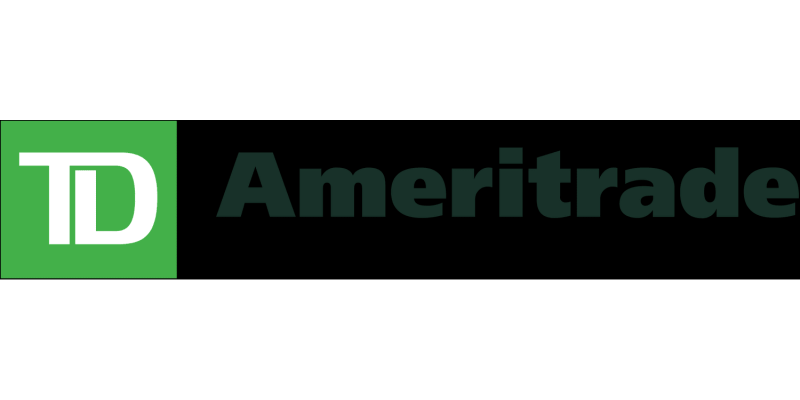
- App name: thinkorswim
- Account minimum: $0
- Fees: No commission for stock or ETF trades
- Tradable assets: Stocks, ETFs, options, futures, forex
Why We Chose It
The thinkorswim® mobile platform tries to pack almost all of the analysis and charting capabilities of the robust desktop trading platform into an app. There is a lot of information available, but it can also be customized to better suit your trading needs on the go. Traders and investors uninterested in these more in-depth tools can choose to use TD Ameritrade’s standard app.
Pros
-
No commissions on stock or ETF trades, no investment minimums, and no inactivity fees
-
Exceptional educational content and resources, including live support chat with trading specialists
-
Trade analysis tools, including excellent charting tools, and a best-in-class options analyzer
-
Offers a paper trading account
Cons
-
Less experienced traders may find the thinkorswim® platform to be a bit complex
-
Does not offer fractional shares
-
No fixed income trading available on the mobile platform
Overview
TD Ameritrade’s thinkorswim® is a great app, and the mobile version is similar to the desktop version. TD Ameritrade also has some of the best educational material and programming, including access to trading specialists to help with positions. Further, thinkorswim® has among the best analytical tools for trading, including an excellent options analyzer that allows the user to change variables such as stock price and days to maturity so the user can see the changes to profitability graphs in real time.
TD Ameritrade also has a robust offering of assets, including stocks, ETFs, options (including multi-leg options strategies), futures, and bitcoin futures, but they do not offer international bonds or fractional shares, and fixed income trading is unavailable on the mobile app. Unlike the regular TD Ameritrade mobile app, thinkorswim® users (desktop or mobile) have access to special orders like trailing stops, simultaneous multiple orders, and conditional orders such as one-cancels-the-other (OCO).
thinkorswim® also offers a series of screeners for stocks, ETFs, mutual funds, fixed income, and options (including a strategy builder). Watchlists set up on the web or mobile platform are automatically synced up without the need to set it up separately on the corresponding platform.
Serious traders and those who want to learn more about trading can get a lot out of a thinkorswim® account because of the education and support offered by the company, the suite of excellent analytical tools, and the paper trading account to practice with and gain confidence before trading your own money.
Final Verdict
While all the Android apps covered here are well-designed for the most part, the services they represent are quite different. If you are looking solely to invest in stocks and ETFs, all of these mobile platforms can help you do that with varying levels of support in terms of education and analysis. Beyond that, however, your individual investment needs quickly have an impact on your selection. If you want direct access to cryptocurrency, for example, you have the choice between SoFi and Webull. Webull is more trader-friendly with better overall capabilities, but SoFi is more beginner-friendly with a wraparound offering of other financial services. If trading options is your primary interest, you have apps from E*TRADE, TD Ameritrade, Charles Schwab, and Webull vying for your attention. In general, it is always good to find the right brokerage offering first in terms of pricing, available assets, account types, tools, and education, and then look at mobile trading as the secondary criteria.
Compare Apps
| Brokerage | Why We Picked It | Robo Advisor Account Fees | Brokerage Account Fees | Robo Advisor Account Minimum | Brokerage Account Minimum |
|---|---|---|---|---|---|
| E*TRADE | Best Overall | 0.30% annually | Free stock and ETF, $0.50-0.65 per options contract depending on volume | $500 | $0 |
| Charles Schwab (Intelligent Portfolios/Intelligent Portfolios Premium |
Runner-Up | $0 (premium $30 per month plus $300 one-time setup fee) | Free stock and ETF, $0.65 per options contract | $5,000/$25,000 | $0 |
| Webull | Best Free App | N/A – Does not have a robo advisor offering | Free stock, ETF, and options trades (crypto has a 1% markup) | N/A – Does not have a robo advisor offering | $0 |
| SoFi | Best for Beginners | $0 | Free stock and ETF trades (crypto has a 1.25% markup) | $1 | $0 |
| thinkorswim by TD Ameritrade | Best for Experts | TD Essential Portfolios is no longer accepting new investors as of March 12, 2021. | Free stock and ETF, $0.65 per options contract | N/A | $0 |
How Do I Use a Stock Trading App for Android?
Mobile trading has advanced a lot in the last few years. In many cases, it is easier to trade on a broker’s uncluttered mobile platform than the traditional desktop one. Most mobile trading apps have moved to a combination of tabs and tiles that mimic the common smartphone layout and functionality. Some features are near universal, such as charts that use pinch to zoom and stock tickers that have tap-to-see trade options.
Stock trading apps for Android phones also provide access to news, calendars for earnings reports and economic releases, current market conditions, live market prices, and fundamental information on stocks. Some of these capabilities will be in a tab menu along the bottom and others may require a few taps to hit the right screen.
Overall, mobile stock trading apps utilize the familiar layouts used on their brokerage’s desktop/web based offerings to show your current portfolio and its performance, and the status of any orders. Users can choose to buy or sell a security at any time, and also have multiple order types, and often conditional orders, for placing their trade orders. Most apps also provide charting, even though the small screen can be limiting. So, in short, you use the mobile app the same as the desktop, understanding that the mobile app may not contain all of the features available on your computer.
Android vs. Apple Stock Trading Apps
There are usually very few differences between the functionality of brokers’ Android and iOS mobile apps because they are designed to work the same way. If the company is developing apps in different programming languages for the two phone platforms, there may be some lag time where one platform has an update the other platform has not yet received. On the whole, it should not make much of a difference which operating system a mobile app is being used on.
How Should I Choose an Android App?
In many cases, you will simply be choosing the Android app that your broker offers because choosing the right broker (pricing, support, tools, available assets, account types, and so on) is more important than choosing the best app. That said, there are brokers that offer more than one Android app. E*TRADE and TD Ameritrade are both examples of brokers that have an app for casual investors and another for sophisticated investors and traders.
While it is great that mobile brokerage apps have added more and more features from their desktop platforms that typically contain more functionality, this doesn’t matter nearly as much as determining what features you currently use, or might want to use in the future. If you will be entering options positions on the go, for example, you are probably going to need the trader-focused version for more robust charting and analysis. If you merely want to check how your portfolio is doing,then the more casual app will suffice. Once you have an inventory of what you want to do through your mobile device, you can choose which app to use if your broker offers casual and trader focused versions.
Pros & Cons of Stock Trading Apps
Pros
-
The ability to monitor, manage your finances, and trade markets from anywhere you have a data connection allows traders to be unshackled from their desk
-
The functionality and features available on the mobile brokerage apps are impressive and already meet the needs of most traders
-
As our mobile phones continue to have an ever increasing role in our daily lives, it makes sense to integrate ones finances onto that mobile platform
-
There are typically no additional costs for using a mobile trading app
Cons
-
Small screens on mobile phones creates challenges in incorporating all desktop functionality, such as detailed charting and options analysis graphs, into the mobile app
-
The mobile apps often have less functionality than a brokerage company’s desktop version when you are doing more complex trading
-
Having access to the market every second of every day can cause people to lose sight of the big picture and pay too much attention to the market’s daily noise
How We Chose the Best Stock Trading Apps for Android
To choose the best stock trading apps for Android, we looked at more than a dozen different Android mobile apps from top brokerages in the U.S. The primary focus was on fees and features most important to stock traders, including beginners and active traders.
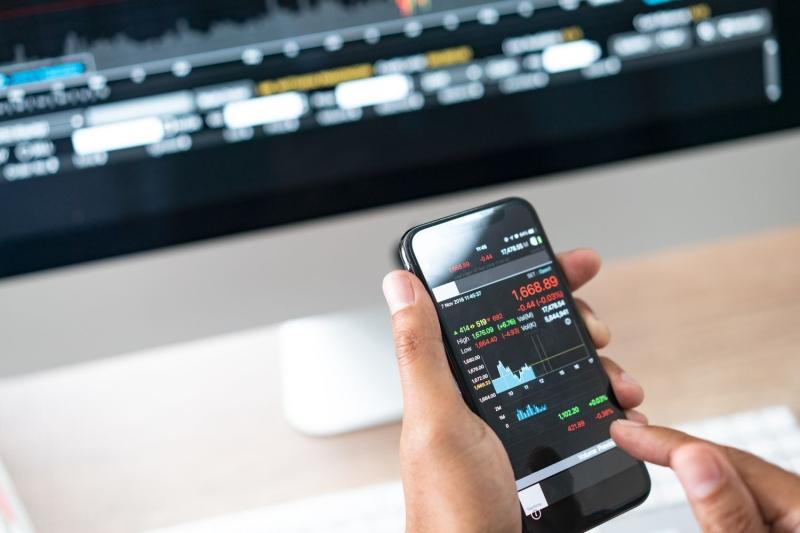
Article Sources
-
StatCounter. "Mobile Operating System Market Share United States Of America."
-
StatCounter. "Mobile Operating System Market Share Worldwide."
-
U.S. Securities and Exchange Commission. "Statement on Cryptocurrencies and Initial Coin Offerings."
-
E*TRADE. "Core Portfolios – Automated Investment Management."
-
Charles Schwab. “Charles Schwab & Co., Inc.Schwab Intelligent Portfolios Solutions™Disclosure Brochure.”
-
SoFi. "Automated Investing."
-
TD Ameritrade. "Make investing easy, convenient and affordable. TD Automated Investing."
-
TD Ameritrade. "Managed portfolio solutions for today's investor."
